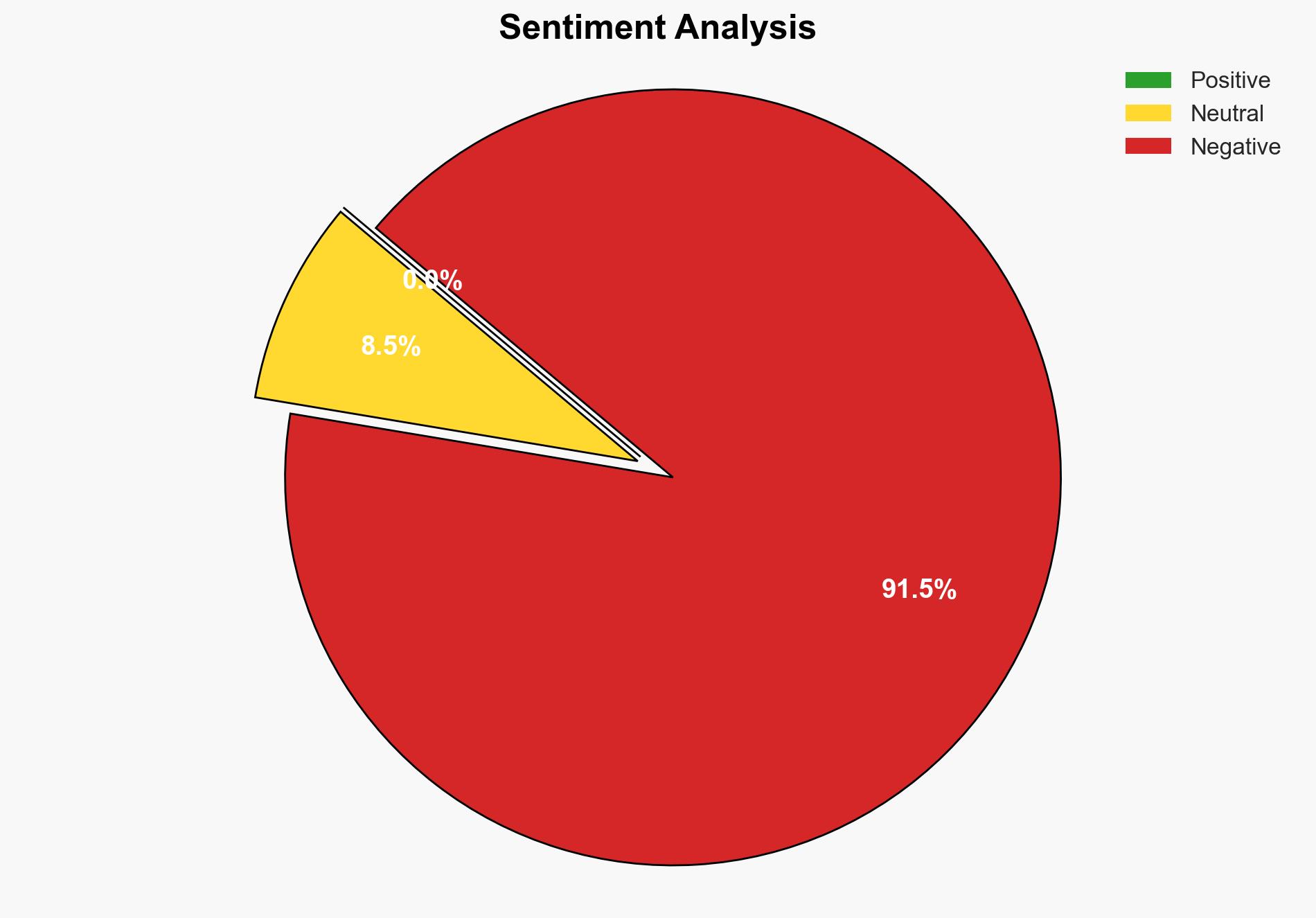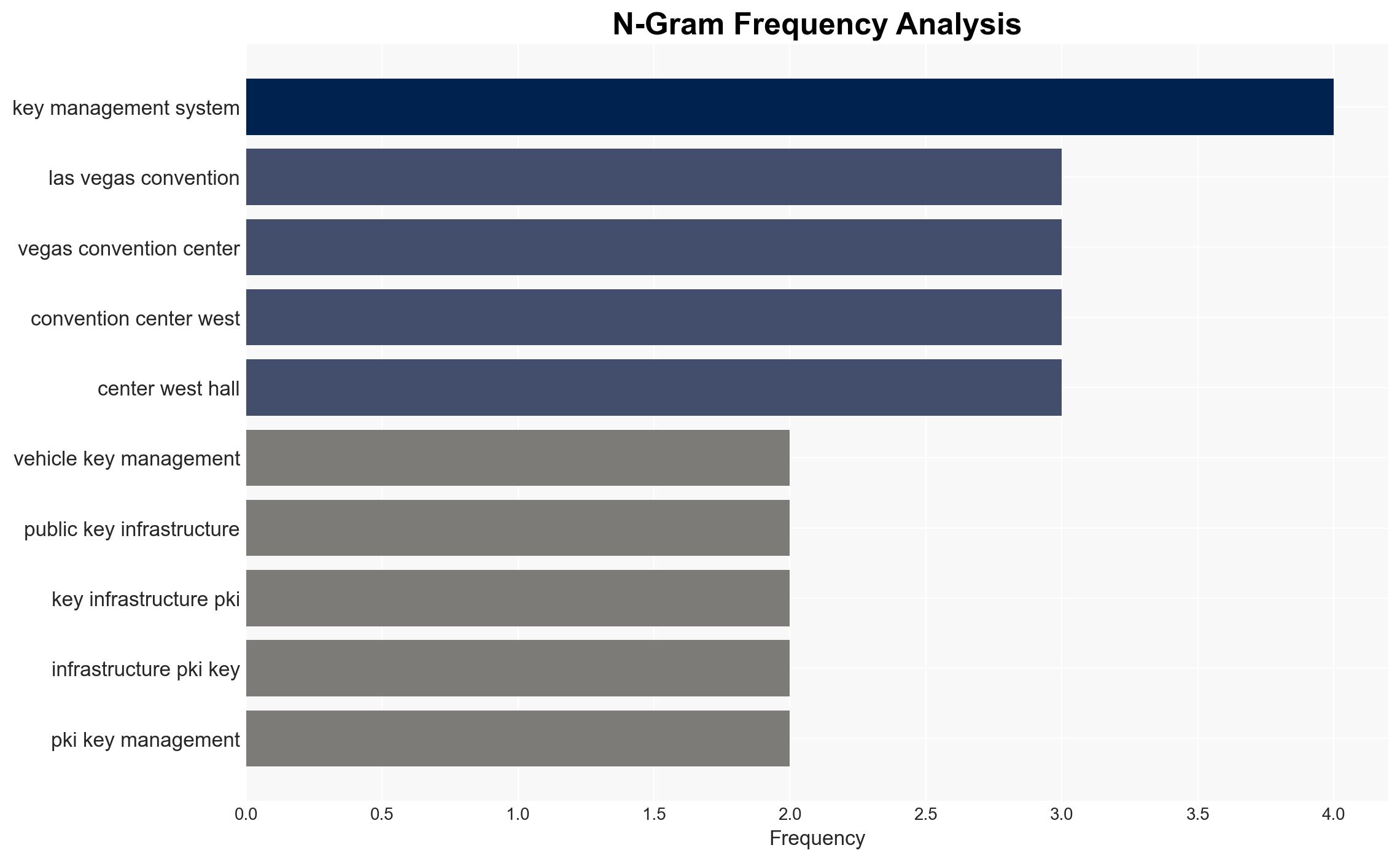AUTOCRYPT to Unveil Next-Gen Vehicle Solutions at CES 2026
Published on: 2025-11-24
AI-powered OSINT brief from verified open sources. Automated NLP signal extraction with human verification. See our Methodology and Why WorldWideWatchers.
Intelligence Report:
1. BLUF (Bottom Line Up Front)
With a moderate level of confidence, it is assessed that AUTOCRYPT’s unveiling of next-gen vehicle solutions at CES 2026 will significantly advance automotive cybersecurity standards, but may face challenges in adoption due to potential interoperability issues and regulatory hurdles. It is recommended that AUTOCRYPT strengthens partnerships with OEMs and regulatory bodies to ensure seamless integration and compliance.
2. Competing Hypotheses
Hypothesis 1: AUTOCRYPT’s next-gen solutions will set a new industry standard in automotive cybersecurity, gaining widespread adoption among OEMs and mobility operators.
Hypothesis 2: AUTOCRYPT’s solutions will face significant adoption challenges due to interoperability issues and regulatory compliance complexities, limiting their market penetration.
Hypothesis 1 is more likely given AUTOCRYPT’s track record of innovation and strategic collaborations, but Hypothesis 2 cannot be dismissed due to the complexity of integrating new technologies across diverse automotive platforms and regulatory environments.
3. Key Assumptions and Red Flags
Assumptions: It is assumed that AUTOCRYPT’s solutions are technically superior and align with current industry standards. The assumption that OEMs and mobility operators will prioritize cybersecurity enhancements is also critical.
Red Flags: Potential over-reliance on AI-driven solutions without sufficient human oversight could introduce vulnerabilities. The lack of detailed information on regulatory compliance strategies is a concern.
4. Implications and Strategic Risks
The successful adoption of AUTOCRYPT’s solutions could significantly reduce cybersecurity risks in the automotive sector, enhancing consumer trust and safety. However, failure to address interoperability and regulatory challenges could lead to fragmented adoption, creating security gaps. Politically, increased cybersecurity could mitigate risks of state-sponsored cyber-attacks on critical infrastructure.
5. Recommendations and Outlook
- Engage in strategic partnerships with leading OEMs and regulatory bodies to ensure compliance and interoperability.
- Enhance transparency in AI-driven processes to mitigate potential vulnerabilities.
- Best Case: AUTOCRYPT’s solutions become the industry benchmark, leading to widespread adoption and enhanced cybersecurity.
- Worst Case: Regulatory and interoperability challenges hinder adoption, leading to fragmented market penetration.
- Most Likely: Gradual adoption with initial challenges in regulatory compliance and interoperability, eventually leading to broader acceptance.
6. Key Individuals and Entities
Seokwoo Lee, Founder and CEO of AUTOCRYPT.
7. Thematic Tags
Structured Analytic Techniques Applied
- Adversarial Threat Simulation: Model and simulate actions of cyber adversaries to anticipate vulnerabilities and improve resilience.
- Indicators Development: Detect and monitor behavioral or technical anomalies across systems for early threat detection.
- Bayesian Scenario Modeling: Quantify uncertainty and predict cyberattack pathways using probabilistic inference.
Explore more:
Cybersecurity Briefs ·
Daily Summary ·
Support us





